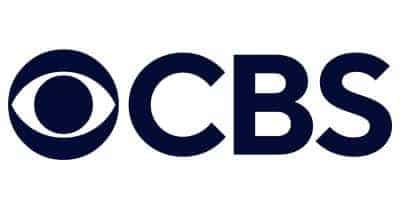QLAQ Guide — 2025: Rules and Benefits in Retirement Plans
The Qualified Longevity Annuity Contract (QLAC) Guide for 2025 is an essential resource for anyone looking to enhance their retirement planning. A QLAC is a specific type of longevity annuity that allows you to convert some of your retirement savings into a stream of income for later years, specifically when you reach the age of 85.
This strategy helps to mitigate the risk of outliving your savings, providing a safety net during your later retirement years. Starting in 2025, new regulations and guidelines will offer enhancements to QLACs, making them an even more attractive option for individuals aiming to optimize their retirement income strategy. Under these updated rules, higher contribution limits and greater flexibility in investment choices are anticipated, aligning the products more closely with the evolving needs of retirees.
Incorporating a QLAC into your retirement plan can deliver numerous benefits, including tax advantages. The amount you invest in a QLAC can be excluded from your Required Minimum Distributions (RMDs) until you begin receiving payouts, thus potentially lowering your taxable income during your working years.
This feature allows retirees to manage their finances more effectively, as they can grow their retirement savings tax-deferred for a longer period. Additionally, the QLAC provides peace of mind by guaranteeing a stream of income during the later stages of retirement, effectively relieving the anxiety of future financial uncertainties. As you navigate your retirement plan options, understanding the rules and benefits of QLAQ for 2025 can empower you to make informed decisions that secure your financial future.

A Qualified Longevity Annuity Contract (QLAC) is a deferred income annuity bought with qualified retirement money that delays payments until later in life and can remove the premium from required minimum distribution (RMD) calculations for earlier years. This guide walks through how QLACs work, explains the 2025 lifetime contribution cap of $210,000, and uses practical planning examples to show potential tax and income outcomes.
You’ll get the regulatory background, learn which retirement accounts can fund a QLAC, weigh the main benefits and trade-offs, and see clear criteria to decide if a QLAC belongs in your plan. We also outline step-by-step purchase actions and how to compare compliant QLAC offers online, with straightforward comparisons to DIAs, fixed annuities, and SPIAs so you can evaluate options side by side.
What Is a Qualified Longevity Annuity Contract and How Does It Work?
A QLAC is a type of deferred income annuity bought with qualified retirement funds that postpones payouts to a later age and, within statutory limits, removes the premium from the balance used to compute RMDs. The process is simple: you move eligible qualified account dollars into the annuity today, the insurer guarantees a future income stream, and payments begin on a deferred start date you choose—typically in later retirement.
The main value is a predictable lifetime income stream combined with an RMD exclusion that can lower taxable distributions in earlier retirement years. That tax treatment separates QLACs from many other annuities and makes them a targeted tool for longevity and tax-aware planning; the sections below compare QLAC rules to general DIAs and summarize the regulatory history behind QLACs.
What Defines a QLAC and How Is It Different from Other Deferred Income Annuities?
Three features define a QLAC: it’s funded with qualified-plan assets, it defers payouts to a later age, and it receives special RMD exclusion treatment under IRS guidance. Unlike typical deferred income annuities (DIAs) bought with nonqualified dollars, QLACs must meet eligibility rules that cap premiums and specify which account types can fund the contract.
The practical distinction is tax treatment: premiums within the statutory QLAC limit are excluded from the account balance used to calculate annual RMDs, lowering taxable distributions in your 70s and early 80s while preserving guaranteed income for later. Those mechanics explain why QLACs are positioned primarily as retirement-income and tax-planning tools rather than general annuity purchases.
What Is the History and Regulatory Background of QLACs?
QLACs originated from IRS and Treasury guidance that followed legislative changes allowing certain deferred annuities to be excluded from RMD calculations when structured to meet specific conditions. The policy framework took shape around 2014 and has been refined since; SECURE Act 2.0 and later updates through 2025 adjusted contribution parameters and clarified eligible account treatment.
These milestones shifted how advisors and retirees view longevity income and RMD timing, making QLACs a practical option for managing tax exposure and securing late-life guaranteed income. Knowing this timeline helps you and your adviser apply current rules correctly when adding a QLAC to a retirement cash-flow plan.
What Are the QLAC Rules and Contribution Limits for 2025?

For 2025, QLAC rules focus on a lifetime premium cap and which accounts can fund the annuity—both of which determine how much qualified money can be excluded from RMD calculations and how a contract must be structured to remain compliant. The key number to remember is the 2025 lifetime QLAC contribution limit of $210,000 per individual (subject to future indexing).
Other important rules cover payout start-date constraints and eligible account types. The table below summarizes the primary rules so you can see the limits and practical impacts before we walk through example calculations and account-specific notes.
Introductory summary of applicable rules for 2025:
| Rule | Detail | Example / Impact |
|---|---|---|
| Lifetime contribution limit | $210,000 per individual (2025) | Premiums up to $210,000 excluded from RMD calculation |
| Eligible accounts | IRA, 401(k), 403(b), 457(b), SEP IRA, SIMPLE IRA | Employer plans and IRAs can fund QLACs subject to plan rules |
| Payout start constraints | Deferred start date required (specific ages set by guidance) | Later start dates increase guaranteed payout amounts |
| Per-spouse application | Limits generally apply per person; spousal strategies possible | Married couples may each use a limit if plan rules allow |
This table clarifies the main 2025 constraints that affect tax planning and income design. Understanding how these attributes interact is essential before using a QLAC to reduce RMDs and structure later-life income.
As you consider whether to use part or all of eligible balances against the $210,000 limit, My Annuity Store, Inc. can help you compare compliant QLAC offerings across carriers and start a quote. Presented as America’s largest online annuity platform, My Annuity Store partners with many top insurance companies and provides independent, licensed annuity experts to simplify side-by-side comparisons of features and rates. If you’re ready to move from rules to price and carrier comparison, request quotes or compare carriers and start a quote through our platform to see policies that meet the 2025 limits.
What Is the $210,000 QLAC Contribution Limit for 2025 and How Is It Applied?
The $210,000 lifetime limit for 2025 is the maximum amount of qualified-plan premiums that an individual can use to purchase a QLAC and exclude from RMD calculations. In practice, if you move $210,000 from an IRA into a compliant QLAC, that amount is not counted when the IRS calculates your RMD base—reducing RMDs in earlier years and deferring taxable income until the annuity begins paying.
Spouses generally each have their own limit if account ownership and plan rules allow separate QLAC purchases, which can double the amount of protected funds in some cases. Example: with a $500,000 IRA and a $210,000 QLAC purchase, the RMD base used for the RMD formula would be about $290,000 until QLAC payouts begin.
How Does the SECURE Act 2.0 Impact QLAC Rules and Eligibility?
SECURE Act 2.0 and follow-up provisions refined how QLACs are treated—adjusting contribution parameters, clarifying eligible plan types, and updating indexing that affects the lifetime limit over time. These changes broadened applicability for certain plans and altered long-term planning considerations for clients who expect limits to rise.
For advisers and retirees, the practical steps are to reassess timing for a QLAC purchase relative to other distribution strategies and to monitor future indexing so purchases align with current limits and eligible funding sources.
Which Retirement Accounts Are Eligible to Fund a QLAC?, 403, 457, SEP IRA, SIMPLE IRA explained)
Several types of qualified retirement accounts can fund a QLAC, though availability depends on plan provisions and whether a plan allows in-service distributions or rollovers for an annuity purchase. Commonly eligible account types include IRAs and many employer plans such as 401(k), 403(b), and 457(b), plus SEP and SIMPLE IRAs. When a plan restricts direct purchases, a rollover into an IRA is a frequent workaround. Confirm plan-level permissions and timing early so you know the administrative steps and expected paperwork when converting funds into a QLAC.
What Are the Key Benefits of Using a QLAC in Retirement Planning?
QLACs offer practical benefits for managing longevity risk, tax timing, and income predictability by converting part of your qualified assets into a guaranteed later-life income stream. The main advantages are lowering RMD-driven taxable income in early retirement, creating guaranteed lifetime income that hedges longevity risk, and removing a portion of your income from market volatility. Together, these effects smooth taxable income now while providing a stable income floor later when other assets may be stressed. The table below summarizes those benefits, how they work, and practical examples you can use to estimate impact.
| Benefit | How It Works | Practical Example |
|---|---|---|
| RMD reduction | Premium excluded from RMD base | $210,000 QLAC reduces RMD base and lowers early taxable withdrawals |
| Lifetime income | Insurance company guarantees deferred payouts | Monthly lifetime income beginning at chosen start age provides steady cash flow |
| Market protection | Payouts are not tied to market returns | Predictable payments even if portfolio declines during retirement |
Those mappings illustrate how QLACs can simplify income planning and improve tax timing. The next sections break down each benefit and show how to quantify RMD effects and income guarantees.
If you want to compare QLAC rates across multiple insurers and get licensed guidance, My Annuity Store, Inc. offers multi-carrier comparison tools and access to independent, licensed annuity experts. Use our comparison tools to evaluate payout rates, joint-life options, and rider availability—then request quotes or compare carriers and start a quote to see real policy examples that match the benefits discussed.
How Does a QLAC Reduce Required Minimum Distributions?
A QLAC reduces RMDs by excluding the qualifying premium—up to the statutory limit—from the account balance used to compute your annual RMDs. In practice, when the IRS calculates your RMD, your qualified account value is lowered by the QLAC premium amount that qualifies for exclusion, which reduces taxable withdrawals until payments begin.
For example, funding a QLAC with $100,000 lowers the RMD base by that amount and produces smaller RMDs and tax bills in the interim; the deferred income is taxed later when payouts commence. This targeted exclusion helps smooth taxable income over retirement and manage bracket exposure.
What Lifetime Income and Longevity Protection Does a QLAC Provide?
QLACs turn a portion of retirement savings into a guaranteed income stream that starts on a deferred date and continues for life—or for joint lives if you choose joint options. Delaying the start date raises the eventual payout, offering stronger longevity protection that complements Social Security or pension income. Joint-life options protect a spouse but usually lower the initial payout versus single-life choices; these are trade-offs retirees should weigh. The contractual certainty of payments creates a reliable income floor that can anchor your broader retirement cash-flow plan.
How Does a QLAC Protect Against Market Volatility?
QLAC payouts are contractually guaranteed and not tied to market performance, so they provide income predictability that’s insulated from portfolio drawdowns and market downturns. That separation reduces sequence-of-returns risk for the insured portion of your retirement income. The trade-off is giving up potential market upside—QLACs prioritize income security over growth. Many retirees combine a QLAC with liquid, market-exposed assets to keep upside potential while securing a dependable base income.
What Are the Limitations and Important Considerations When Choosing a QLAC?
Choosing a QLAC involves trade-offs—chiefly irrevocability and limited liquidity, since premiums paid are typically not accessible once the contract is issued. Other important considerations include restrictions on which annuity types qualify as QLACs, effects on survivor benefits, and how your chosen payout start date impacts both guaranteed income and near-term cash needs. It’s critical to weigh these constraints against the benefits and keep enough emergency liquidity outside the QLAC-funded portion. The list below summarizes the principal factors to review before committing qualified assets to a QLAC.
- Irrevocability: Premiums generally cannot be withdrawn once paid, which limits access to funds for emergencies.
- Limited annuity types: Only certain deferred income annuity structures qualify for QLAC treatment; some variable or indexed options may be restricted.
- Payout timing trade-offs: Later start dates raise payouts but delay liquidity and immediate income availability.
After reviewing these constraints, consider mitigation approaches such as partial funding, keeping a separate emergency reserve, and pairing QLACs with liquid income sources to preserve flexibility. The sections that follow explain irrevocability, eligibility limits, and payout timing in greater detail.
Why Is a QLAC Irrevocable and What Does That Mean for Liquidity?
A QLAC is effectively irrevocable because you exchange premium dollars for the insurer’s promise of future guaranteed income under a binding contract—this is what generates the guarantee and also limits access to the principal. In practice, irrevocability means you should fund a QLAC only with money you don’t expect to need for emergencies, and you should maintain separate liquid reserves for short-term needs.
Mitigation strategies include buying a QLAC for only part of your qualified assets and keeping a diversified mix of liquid investments to preserve flexibility. Understanding this permanence upfront helps you balance guaranteed lifetime income against immediate access to funds.
What Are the Restrictions on Annuity Types Eligible for QLACs?
Not every annuity product qualifies as a QLAC. Generally, fixed deferred income annuities structured to meet IRS conditions are eligible, while some variable or indexed annuities may be excluded or limited for RMD treatment. These restrictions ensure QLACs offer clear deferred guarantees and predictable tax treatment, which is why market-linked features can disqualify a product.
When comparing carriers, confirm whether a specific contract is offered as a QLAC-qualified product and which riders or optional features are permitted under QLAC rules to avoid surprises about tax treatment or contract acceptability after purchase.
How Do Payout Start Dates and Longevity Risk Affect QLAC Planning?
Selecting a payout start date is central to QLAC planning: delaying the start increases the guaranteed payout and strengthens longevity protection, while earlier starts provide income sooner but at lower monthly amounts. Your choice should reflect life-expectancy expectations, other income sources available earlier in retirement, and tolerance for market risk.
Common strategies include laddering purchases with staggered start dates or combining a QLAC with short-term guaranteed products to stage income. This timing trade-off balances maximizing lifetime income against maintaining liquidity for earlier retirement spending.
How Do You Determine If a QLAC Is Right for Your Retirement Plan?
Deciding whether a QLAC fits your plan means evaluating personal factors like age, qualified-balance size, RMD exposure, other guaranteed income, and liquidity needs. Good candidates typically are retirees who expect to live into advanced ages, have sizable qualified balances that create large RMDs, and want a guaranteed income floor to manage longevity risk and tax timing. QLACs may be less suitable for people who need high liquidity, anticipate large near-term healthcare or legacy transfers, or prioritize market participation for growth. The checklist below helps you assess fit.
- Do you have significant qualified balances that could create large RMDs?
- Are you concerned about outliving your investments and want guaranteed late-life income?
- Can you maintain sufficient liquidity outside the QLAC for emergencies and near-term needs?
Use these items to guide an objective evaluation; the following subsections provide common scenarios and integration techniques to turn the checklist into concrete allocations and planning steps.
Who Are the Ideal Candidates for a QLAC?
Ideal QLAC candidates are retirement-aged individuals or couples with substantial qualified account balances who want to limit RMD-driven taxes and secure guaranteed late-life income, and who maintain other liquid assets for emergencies. Typical examples include a single retiree using a QLAC to cap early RMDs, a married couple coordinating separate QLAC purchases to protect survivor income, and a high-saver who wants to lock in a base income while leaving growth assets invested for legacy or discretionary spending.
QLACs are less suitable for those needing immediate access to funds, those with small qualified balances, or those prioritizing market upside. These archetypes help you decide if QLAC mechanics align with your retirement goals.
How Can You Integrate a QLAC Into Your Overall Retirement Income Strategy?

Common integration approaches include partial funding, laddering different payout start dates across multiple purchases, and combining guaranteed income with liquid and growth-oriented assets for flexibility and upside. A practical plan might identify the portion of qualified assets to protect, set target payout start ages, preserve a cash buffer for five to ten years, and periodically revisit allocations as laws or circumstances change.
Allocation options range from conservative (larger QLAC share to secure a strong income floor) to moderate (partial QLAC funding plus substantial liquid and growth allocations). Regular rebalancing and advice from a licensed professional help ensure your QLAC remains aligned with evolving needs and regulations.
How to Purchase a QLAC Through My Annuity Store in 2025?
My Annuity Store’s platform streamlines comparing QLAC products across multiple carriers and completing applications, while licensed experts provide independent guidance on features, rates, and 2025 compliance. The purchase workflow focuses on carrier comparison, personalized quotes, application and documentation, and final policy issuance with confirmed contract terms and payout start dates.
Below is a practical how‑to you can follow from research to issued contract, with expected outcomes and timeframe estimates for each step. This section is intended to educate and to help you move from discovery to action by requesting quotes or comparing carriers and starting a quote.
| Step | Action | Expected outcome/timeframe |
|---|---|---|
| Research & compare | Review carrier payout rates and contract features | Understand trade-offs; same-day to one week |
| Request quotes | Submit details to obtain personalized rate illustrations | Receive comparable quotes within days |
| Apply & underwrite | Complete application and submit required documents | Underwriting weeks to a month |
| Issue & confirm | Policy issued with contract and payout schedule | Policy active; confirmation of start date |
These steps outline the path from initial comparison to contract issuance and set realistic expectations for timing and outcomes. The next sections explain each phase in more detail and list the documentation and decisions you should expect.
My Annuity Store, Inc. positions itself as America’s largest online annuity platform and partners with many top insurers while offering independent, licensed annuity experts to simplify carrier comparisons and the application process. If you want to compare rates, evaluate carrier-specific QLAC features, and receive expert assistance to move from research to purchase, get quotes or compare carriers and start a quote through our platform to view tailored 2025-compliant options.
What Are the Steps to Buying a QLAC Online?
Buying a QLAC online typically follows a short sequence: research carriers and contract types, request tailored quotes, complete the application with supporting retirement-account documents, and await underwriting and policy issuance.
Expect to gather account statements, beneficiary designations, and ID documents during the application step, and be ready to choose a payout start date and beneficiary preferences. Underwriting and issuance timelines vary by carrier but commonly take several weeks; once issued, your contract will spell out payout mechanics and the deferred income start date. This end-to-end view sets expectations and highlights decision points where licensed advice can clarify trade-offs.
How to Compare QLAC Rates and Features Across Multiple Providers?
When comparing QLAC offers, focus on payout rates for your chosen start date, availability of joint-life options, permitted riders, and the issuer’s financial strength—these determine the quantity and quality of guaranteed income.
Build a comparison table with columns for carrier payout rate, start date, joint vs. single life options, rider availability, and ratings so you can weigh trade-offs objectively. Consider accepting a slightly lower payout for meaningful survivor protection or a modest inflation rider versus higher base payouts with fewer features. Use credit ratings and company stability as tiebreakers to prioritize long-term contractual guarantees over small rate differences.
- Payout rate at chosen start date
- Joint-life and survivor benefit options
- Rider availability and cost
- Issuer financial strength and ratings
What Should You Know About QLAC Contract Features and Optional Riders?
QLAC contract features and optional riders vary by carrier. Common rider types include joint-life survivor options, limited inflation adjustments, and death benefit variations—each affects payout levels and starting rates. Riders typically lower the base payout because they transfer extra risk or flexibility to the insurer, so weigh cost-versus-benefit before adding options.
Confirm which riders are QLAC-eligible and how they interact with RMD treatment under current rules; since rider availability is carrier-specific, comparing multiple insurers helps find the best combination for your goals. Always review contract language, costs, and beneficiary implications during underwriting and before you finalize the purchase.
- Joint-life riders: provide survivor income but reduce initial payout.
- Inflation or cost-of-living riders: increase income over time at lower starting rates.
- Death benefit options: vary in how remaining value or guarantees pass to beneficiaries.
Frequently Asked Questions
What are the tax implications of purchasing a QLAC?
When you purchase a Qualified Longevity Annuity Contract (QLAC), the premium amount is excluded from the balance used to calculate your Required Minimum Distributions (RMDs), which can lower your taxable income in the years leading up to when the annuity starts paying out. However, once the QLAC begins making payments, those distributions will be taxed as ordinary income. It's essential to consult with a tax advisor to understand how this strategy fits into your overall tax planning and retirement income strategy.
Can a QLAC be used in conjunction with other retirement income strategies?
Yes, a QLAC can be effectively integrated with other retirement income strategies. Many retirees use QLACs alongside Social Security benefits, pensions, and other investment accounts to create a diversified income stream. This combination allows for a stable income floor while still having access to growth-oriented investments. By strategically timing the start date of your QLAC payments, you can optimize your overall retirement cash flow and manage tax implications more effectively.
What happens to a QLAC if the annuitant passes away before payments begin?
If the annuitant passes away before the QLAC payments commence, the treatment of the contract depends on the specific terms outlined in the contract. Some QLACs may offer a death benefit that allows the remaining value to be passed on to beneficiaries, while others may not. It's crucial to review the contract details and discuss options with your financial advisor to ensure that your estate planning needs are met and that your beneficiaries are protected.
How does inflation affect QLAC payouts?
QLAC payouts are typically fixed and do not automatically adjust for inflation unless you purchase an inflation rider, which can increase the payout over time. Without such a rider, the purchasing power of your fixed payments may diminish as inflation rises. Therefore, when considering a QLAC, it's important to evaluate whether you need inflation protection and how it fits into your overall retirement income strategy, especially if you expect significant inflation during your retirement years.
Are there any penalties for withdrawing funds from a QLAC?
Once you purchase a QLAC, the premiums paid are generally irrevocable, meaning you cannot withdraw those funds. This lack of liquidity is a key consideration when deciding to invest in a QLAC. If you need access to funds before the annuity starts paying out, you may face penalties or restrictions. It's advisable to maintain separate liquid assets for emergencies and to carefully assess your cash flow needs before committing to a QLAC.
How can I ensure that my QLAC is compliant with IRS regulations?
To ensure your QLAC is compliant with IRS regulations, it's essential to work with a licensed financial advisor or annuity expert who understands the specific requirements for QLACs. This includes adhering to the contribution limits, eligible account types, and payout start date constraints. Additionally, reviewing the contract terms and ensuring that the annuity meets IRS guidelines will help you avoid potential tax issues and ensure that your retirement income strategy remains effective.
What are the common misconceptions about QLACs?
One common misconception about QLACs is that they are only suitable for wealthy individuals. In reality, QLACs can benefit a wide range of retirees by providing a predictable income stream and reducing RMDs, making them a valuable tool for many. Another misconception is that QLACs are too inflexible; while they do have irrevocable features, they can be strategically integrated with other income sources to create a balanced retirement plan. Understanding these nuances can help retirees make informed decisions about their financial futures.
Conclusion
A Qualified Longevity Annuity Contract (QLAC) can be a practical tool to secure guaranteed late‑life income and reduce RMD-driven taxable distributions earlier in retirement. Used thoughtfully—alongside liquid assets and other income sources—a QLAC can strengthen your retirement cash flow and improve tax timing. To see whether a QLAC fits your plan, compare options through our platform and request tailored quotes. Start exploring choices today to build a more secure, predictable income plan for later life.










